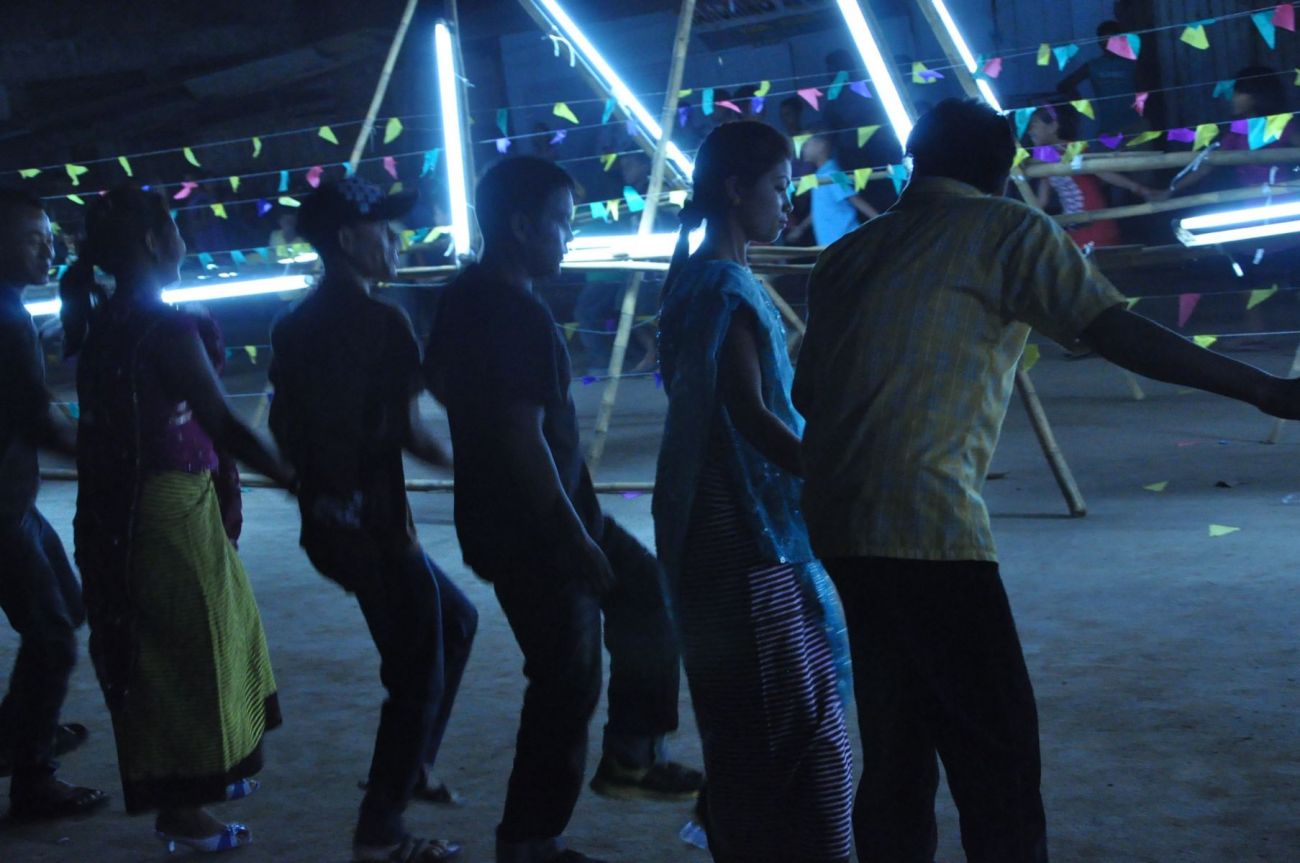
By: Chitra Ahanthem
As another Yaoshang (holi) rolled off the calendar, one thing keeps coming back to mind: has the festival changed or is it my perception? As small children, the five day break for Holi meant only total fun: nagging parents for new tops, the brightest phaneks and joipar. We were three sisters and one brother and I had one other extra thing that I would ask every Holi: the fastest pitchkaari! There was no way that I would let the boys go scot-free after they put colour over me or did anything else to pester me or my sisters. On one memorable occasion, I dumped a pesky boy who would not leave us alone and pushed and shoved him in the road-side drain! The highlight of Yaoshang was of course going the rounds of houses in the neighbourhood for nakatheng but our parents would never allow us to cross neighbourhoods for this. If someone locked their house to stop us from entering and asking for nakatheng, it often meant that they would wake up the next day to find their vegetable patches uprooted or their clothes on the washing lines dumped in the pond or drain!

Much later, I would get to see another side of Holi: the devotional aspect. This was thanks to a documentary film being shot around the festival by a team that came down from Mumbai. As a logistical support person for the team doubling up as translator, it was an eye opener indeed to look on the festival from another perspective. Holi to the many old devotees and followers of Hinduism meant offering the best of spring to Lord Krishna and his consort, Radha. It meant celebrating their divine love. From this strand was looped the link of Holi as a social outlet for young people to get to know each other and even decide on marriage! Thabalchongba brought together young people together in its form of a community gathering. It offered them the opportunity of holding hands and talking with another in full glare of parents and elders! In a society where otherwise public displays of affection are considered taboo, Thabalchongba was the traditional yet modern way of a social check out for eligible young men and women. A young man who was interviewed for the film laughed his head off and recounted how he had eloped with his wife. “Their Thabalchongba took place circling a road and as her parents and elders got left behind around their house, we eloped as soon as we were at the furthest point from them!”, he said.
One other activity around Holi that cannot be left out is the Sports meets that are organized at the Leikai level. Many often describe them as being representative of the great love for sports that people of this state have. There may be some amount of truth is this assumption but it would be wrong to pitch Sports meets during the festival as some great ground for encouraging sports. Firstly, the activities are conducted in an almost casual manner: there are no clock timers for athletic activities; the judges are often the elders of the Leikai or young people while the participants are mostly people who do not do any athletic activity for the whole year. At the most, some would be people who do a bit of physical activity like going for jogging or to the gymnasium. For the Yaoshang sports meets to be actually an extension of grooming or encouraging sporting talents, there needs to be much more competitiveness. Perhaps organizing them on the lines of Municipal wards etc may help bring in some seriousness. While organizing sports meets have brought down the extent of small children standing by road-sides and stopping pedestrians and vehicles for Nakatheng, much needs to be done if they are to be vehicles for encouraging sporting talents. They remain confined to only young children or senior people in the locality since the in-between young people are on the roads in their vehicles zipping by.
And that brings us to another critical area: are the five days of Holi worth it? The practice of going around for monetary collections for Thbalchingba, chaak-chaanaba, sumang leela, etc often means that majority of shops and business establishments remain closed. Passenger vehicles stay off the road and people who make a living from daily labour or selling vegetables etc suffer the most. Not much gets done during the five-day break.
End-point:
Eleven people died in separate incidents during this year’ five day Yaoshang break. Would it be total co-incidence that some thing or the other keeps happening every Yaoshang five day break (when the media is in sleep-mode too)? Some years ago, the first spate of killing non-migrant workers took place during this period. The Heirok firing and its immediate after effects took place during the same said period. Is there a Yaoshang curse over the state? There can be no real answer to this but it is high time indeed that people started taking a re-look at what whether Yaoshang needs to be around like a social and cultural curfew that stops life in its tracks.




“Is there a Yaoshang curse over the state?”Yes indeed it is!Any mayang tagged culture will get wrath!Plus mayang named people will too get the brunt of time.Prove is last mayang holi and this holi!Hence proved that time is just nearing for cleansing all mayang related stuffs!